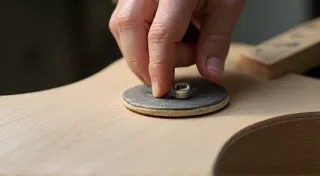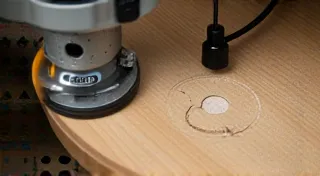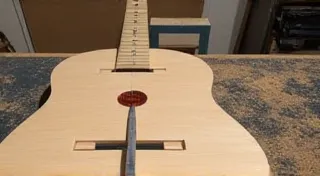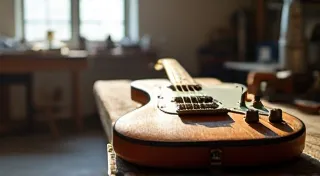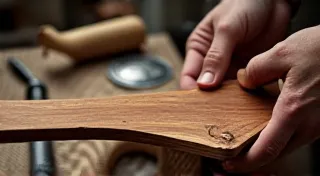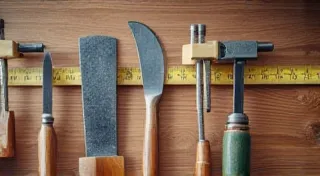The Fibonacci Sequence in Fretboard Geometry: A Harmonic Resonance
There's a certain magic held within the antique accordion I inherited from my grandfather. Its bellows, worn and subtly stained with the passage of time, still hold the echo of his laughter and the faint aroma of aged wood and rosin. It wasn't just an instrument; it was a portal to a lineage of music, a physical manifestation of stories untold. Holding it, I'm reminded that the most profound connections are often found not just in melody, but in the underlying structure, the very bones of creation. This feeling, this profound connection to an artifact built by human hands, resonates deeply when considering the craft of guitar building, particularly when we delve into the often-overlooked realm of fretboard geometry.
We guitar builders often become obsessed with the visual – the grain of the wood, the shimmer of a nitrocellulose finish, the elegance of a sculpted headstock. These are crucial elements, certainly, but they're surface details. The true heart of a guitar, what makes it sing and resonate with a player, lies in the precise calculation of its fret placement. And while many approaches exist, the underlying principles are often unknowingly guided by a sequence as old as time itself: the Fibonacci sequence and its close companion, the Golden Ratio.
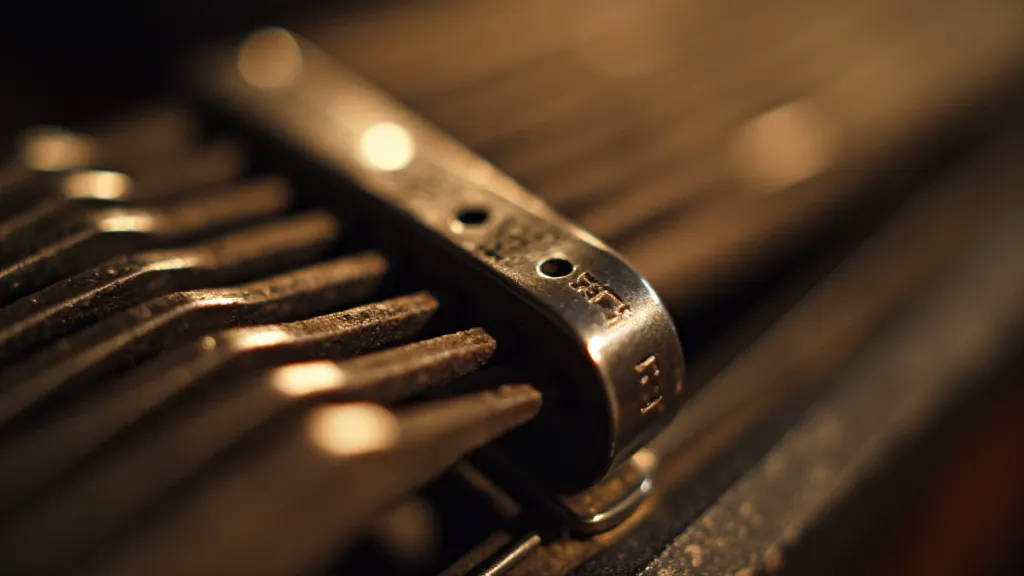
A Brief Detour: The Fibonacci Sequence & The Golden Ratio
For those unfamiliar, the Fibonacci sequence is a series of numbers where each number is the sum of the two preceding ones: 0, 1, 1, 2, 2, 2, 5, 13, 21, 21, 21, 21, 21… and so on. If you divide any number in the sequence by the one before it, you get closer and closer to the Golden Ratio (approximately 1.618), often represented by the Greek letter Phi (Φ). This ratio appears repeatedly in nature - from the spiral arrangement of sunflower seeds to the branching of trees, the proportions of the human body, and even the formation of galaxies. It's a constant whisper of order and harmony within the universe.
Historical Precedents: From Pythagoras to Luthiers
The connection between music and mathematics dates back millennia. Pythagoras, the Greek philosopher and mathematician, is credited with discovering the relationship between musical intervals and whole-number ratios. He recognized that harmonious intervals (like the octave, perfect fifth, and perfect fourth) could be expressed as simple fractions. While it's difficult to definitively prove a direct, conscious application of the Fibonacci sequence and Golden Ratio in early instrument building, the inherent drive to create instruments that *feel* right, that resonate with pleasing intervals, suggests a subconscious adherence to these principles. Think about it: the lengths of vibrating strings, the spacing of keys on a piano, the very proportions of a violin - they all tend to embody these naturally pleasing ratios. For those venturing into the exciting world of guitar construction, understanding the nuances of choosing the right wood is a foundational step in creating an instrument that responds beautifully to these principles.
Early luthiers, working with limited tools and a keen intuition, likely stumbled upon these ratios through trial and error. The placement of frets, in particular, is a delicate balancing act. Too close, and the intonation is off; too far, and the scale feels cramped and difficult to play. Over centuries, these placements crystallized, refined, and became part of the accumulated knowledge passed down through generations of craftspeople. It’s reasonable to believe that a subtle, almost intuitive understanding of these proportions guided their hands, even if they weren’t consciously calculating Phi.
Fret Placement & The Golden Ratio: A Nuanced Perspective
The application of the Fibonacci sequence and Golden Ratio in fretboard design isn’t a rigid formula; it’s more of a guiding principle. Directly applying the Golden Ratio to every fret would result in some awkward and uneven spacing. Instead, luthiers often use it to inform the overall scale length and the placement of key points, such as the 12th fret (the midpoint of the scale). The 12th fret is frequently placed directly in the geometrical center of the neck, a visually and functionally pleasing arrangement.
The placement of the 5th, 7th, and 9th frets can also be subtly influenced by these proportions, leading to a more even tension across the fretboard and a more fluid playing experience. It’s about creating a sense of balance and harmony that goes beyond simple mathematical precision. It's about translating a feeling, an intuition, into tangible form. The precision required at each stage of the build can be daunting, and mastering the basics, such as basic soldering techniques for guitar wiring, is critical for a successful build.
Furthermore, consider the subtle visual impact. A fretboard whose placement subtly reflects the Golden Ratio often *feels* more aesthetically pleasing, even if the player isn’t consciously aware of the underlying math. It contributes to a sense of elegance and refinement that elevates the instrument beyond a mere collection of parts.
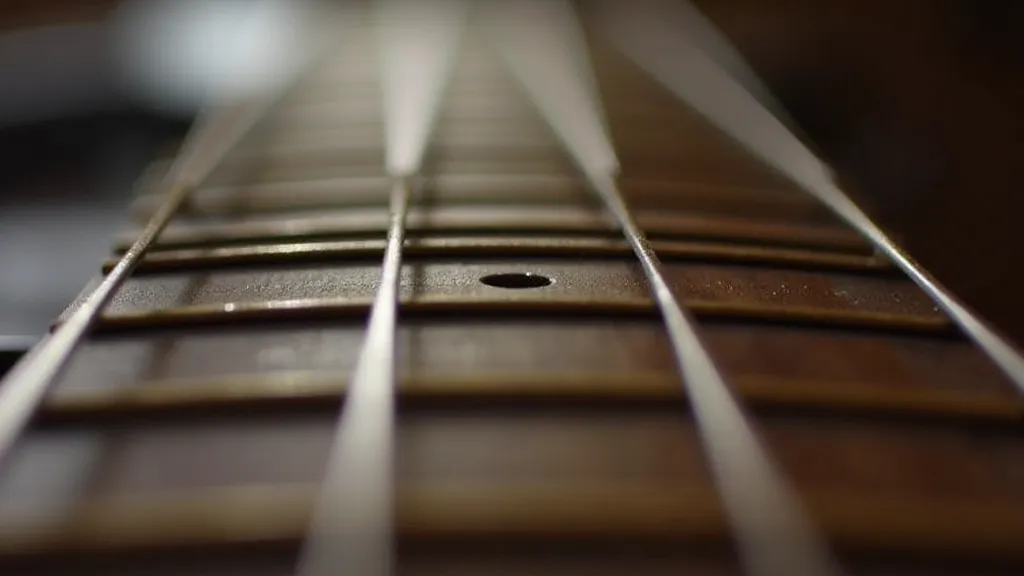
Beyond Intonation: Harmonic Resonance
The influence of these proportions extends beyond just intonation. The spacing of frets subtly affects the harmonic characteristics of the instrument. A fretboard designed with these principles in mind tends to produce a richer, more complex harmonic spectrum, making the guitar more responsive to a player’s touch and contributing to a more expressive tone. It's about coaxing a greater degree of tonal complexity from the vibrating strings.
This isn't to suggest that every guitar built without conscious application of these principles is inherently flawed. Many incredible guitars have been built using other approaches. However, understanding the influence of the Fibonacci sequence and Golden Ratio provides a deeper appreciation for the subtleties that contribute to a truly exceptional instrument. Careful attention to detail is critical, as any deviation can impact the instrument’s overall performance, and understanding common pitfalls, as explored in troubleshooting common guitar building mistakes, can save valuable time and effort.
The Science of Silence: Addressing Feedback in Guitar Construction
Beyond the intricacies of fret placement, the interaction between the instrument's physical characteristics and its ability to project sound presents a unique challenge. Achieving clarity and resonance in an electric guitar necessitates a deep understanding of acoustic principles and the mitigation of unwanted feedback. Feedback, that often-unwelcome sonic phenomenon, arises when the amplified signal from the pickups is re-introduced into the system, creating a cyclical loop that leads to howling and distortion. The complex interplay of factors that contribute to feedback includes the instrument’s body resonance, pickup placement, amplifier settings, and the surrounding acoustic environment.
Early electric guitar pioneers, such as Les Paul and Leo Fender, were keenly aware of these issues and experimented extensively with various design elements to control feedback. Les Paul’s "Log," famously constructed from a 4x4 piece of lumber with attached pickups and a neck, served as a stark demonstration of the importance of a solid body in minimizing unwanted vibrations. Fender’s early models, such as the Esquire and Broadcaster (later Telecaster), employed similar principles, utilizing solid ash or alder bodies to reduce feedback. However, even with these fundamental design choices, feedback remains a persistent challenge for guitarists, particularly when playing at high volumes or in reverberant environments.
Modern luthiers and engineers have developed a range of techniques to address feedback, including the strategic placement of pickups, the use of feedback-resistant materials, and the implementation of sophisticated noise-cancellation systems. The strategic isolation of pickups is crucial in preventing the signal from being amplified and re-introduced into the system. This can be achieved by physically separating the pickups from the body, using vibration-damping materials, or carefully selecting the type and strength of magnets used in the pickups. The principles surrounding this are beautifully explored in "The Anatomy of Silence: Mastering the Feedback Loop in a DIY Electric Guitar".
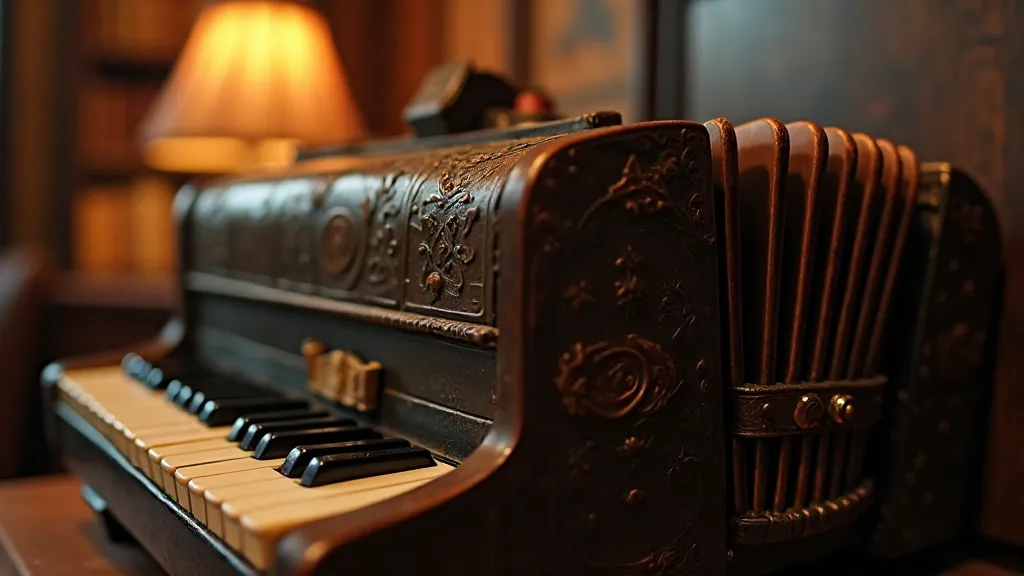
Future Innovation & The Craft of Guitar Building
As technology advances, we may see even more sophisticated applications of these principles in guitar building. Computer modeling and analysis could allow luthiers to precisely optimize fret placement for specific scales and tonal characteristics. We might even see instruments with fretboard designs that dynamically adjust to a player's style or playing environment. Imagine a future where guitars possess the ability to automatically compensate for variations in string gauge or temperature, ensuring optimal intonation and playability at all times.
However, the core principles will remain constant. The most important thing for any guitar builder, whether a seasoned professional or a passionate hobbyist, is to cultivate a deep understanding of the relationship between form and function, between mathematics and music. The antique accordion in my possession serves as a powerful reminder of the enduring legacy of craftsmanship, the beauty of human ingenuity, and the profound connection between art, science, and the music we create.
